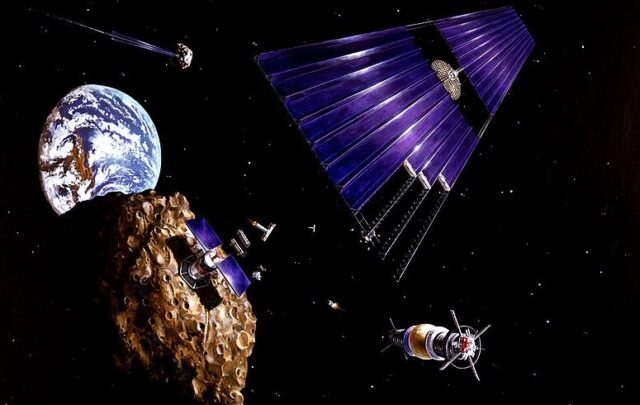Click on the headline (link) for the full text.
Many more articles are available through the Energy Bulletin homepage
Putin: Ukraine Can Afford to Pay Gas Price
Alex Nicholson, Associate Press via Yahoo!News
NOVO-OGARYOVO, Russia – Russian President Vladimir Putin struck a hard line Thursday in a dispute with neighboring Ukraine over natural gas supplies, saying that the former Soviet republic can afford to pay the market price for Russian gas. Cabinet officials reported to Putin that Russia and Ukraine had failed to strike a deal on Russian natural gas supplies to Ukraine next year.
…Putin said that Ukraine’s economy had seen fast growth this year, and added that the Ukrainian government had gotten substantial privatization revenues and Western loans.
… Ukraine has rejected Moscow’s attempts to more than triple the price of gas from the current $50 per 1,000 cubic meters to $160 per 1,000 cubic meters. The dispute could jeopardize supplies of Russian gas to the European Union, which gets almost half of its gas imports from Russia, with most being piped through Ukraine.
(8 December 2005)
Pipeline crunch helps spur surge in LNG prices
Bloomberg via The Standard (Hong Kong)
Rising fuel demand in Asia, Europe and the United States and a shortage of pipelines are pushing liquefied natural gas prices to records, benefiting producers such as BP and hurting industrial firms from Spain to South Korea. Rising fuel demand in Asia, Europe and the United States and a shortage of pipelines are pushing liquefied natural gas prices to records, benefiting producers such as BP and hurting industrial firms from Spain to South Korea.
The price of spot LNG being shipped to Europe may more than double to US$15 (HK$117) per million British thermal units, Purvin & Gertz energy consultant Victor Shum said. Jean-Francois Capelle, vice president for LNG marketing in Asia at Paris-based Total, the world’s fifth- biggest LNG supplier, said: “The market’s really tight. The cargoes are just not available.” Gas prices have soared 89 percent this year at Henry Hub, the US benchmark gas terminal, on supply disruptions caused by hurricanes in the Gulf of Mexico.
In Britain, prices have tripled in a year because of lower output from the North Sea, prompting BP, Europe’s biggest oil company, to import cargoes and consumers such as Terra Industries to cut output. “The globalization of LNG is happening,” said Audie Setters, vice president of international marketing and business development at Chevron Global Gas, a unit of Chevron. “Henry Hub prices have become the benchmark not only for Europe but for spot cargoes across the world today.” Natural gas has risen sixfold on the New York Mercantile Exchange since September 2001 and touched a record US$14.75 on October 5. …
Last year, about 26 percent of the natural gas traded across borders globally, or 178 billion cubic meters, was delivered in liquid form by ships, according to BP’s Annual Statistical Review of World Energy. Pipeline trade totaled 502 billion cubic meters. Spot trading now accounts for about 12 percent of global LNG output, said Capelle, who is based in Tokyo.”In this market, buyers may even have to pay a premium over” US benchmark gas prices, he said. “Even after offering a premium, Japanese buyers are finding it hard to secure spot cargoes.”
(29 November 2005)
Stronger world oil demand growth seen in 2005 – EIA
Tom Doggett, Reuters
WASHINGTON – World oil demand growth will increase more than previously expected for 2005, and rise at a slower rate next year, as petroleum prices decline, the U.S. government’s top energy forecasting agency said on Tuesday. …
The U.S. oil and natural gas sectors are expected to continue to recover from the disruptions caused by Hurricanes Katrina and Rita. Three oil refineries, which have a total processing capacity of 804,000 bpd and are still offline because of the storms, are expected to return to normal operations by the end of February, the EIA said.
The agency also sees a faster recovery in oil production in the Gulf of Mexico, with shut-in output declining from 504,000 bpd in December to about 297,000 bpd by March. The amount of offshore natural gas daily production still shut by the hurricanes is expected to fall from the current 2.7 billion cubic feet to 660 million cubic feet by next March, the agency said.
“The majority of platform repairs are projected to be completed by the end of 2005, although some of the largest oil platforms damaged by the hurricanes are projected to remain out of service through the second quarter of 2006,” the EIA said.
(7 December 2005)
The Easiest Commute Of All
Michelle Conlin, BusinessWeek
On the edge of Albuquerque lies a mammoth expanse of hills and horizon called Mesa del Sol. This celluloid-worthy, clay-colored plateau sprawls for over 25 square miles. It’s the last parcel of its size in North America that is so close to both a central business district and an international airport. When ground broke in October, the unspoiled scrub began giving way to what will eventually become one of the largest planned — and technologically tricked out — communities in the nation…
Mesa del Sol’s developer is Forest City Enterprises Inc. (FCE.A ), the same company behind the “sustainable” Stapleton development outside of Denver — where houses are so hot there’s a lottery to get on the waiting list — and the MetroTech Center in Brooklyn. …
At Sun Microsystems Inc. (SUNW ), nearly 50% of employees can work from home, cafes, drop-in centers, a company office, or some combination thereof — saving the company $300 million in real estate costs, says Bill MacGowan, Sun’s senior vice-president for human resources. Agilent Technologies customer service engineer Walt Swanson hasn’t seen his boss in nearly three years. More and more at Agilent, that’s becoming the norm. In 2003 the company closed 48 U.S. sales offices and swiftly instructed all the employees to work from home. Today, 70% of Agilent’s workforce is connected remotely either some or all of the time. The company estimates that these virtual workers cost 60% less. …
Indeed, at many companies across America, the most innovative new product may be the structure of the workplace itself. Today, every knowledge worker has the tools to work from pretty much anywhere: a laptop, a mobile phone, and global, high-speed Internet access that is becoming as ubiquitous as pay phones used to be. Teams are increasingly transnational, warming undersea cables with Net meetings, conference calls, and collaborative projects involving large, far-flung groups. Increasingly, no one is sure of where anyone else is anymore; what’s amazing is how little it appears to matter. …
(6 December 2005)
Reports on the ‘post-geography’ trend across a number of US corporations.-LJ
We will never make poverty history until we rip up the tax system
Mark Braund, The Guardian (UK)
Despite the prime minister’s resolve, the year in which Britain was to lead the world in making poverty history has achieved little. This month there is one last opportunity as the World Trade Organisation gathers in Hong Kong. But even if this meeting throws up some surprises, we will end the year little closer to ending poverty. Increased aid, debt cancellation and fairer trade would certainly have some impact, but they would not address the underlying causes of poverty. …
Instead of arguing over how much we should tax, we should be asking why an economy based on free markets and private enterprise is so incapable of delivering opportunities and security for all. …
(3 December 2005)





